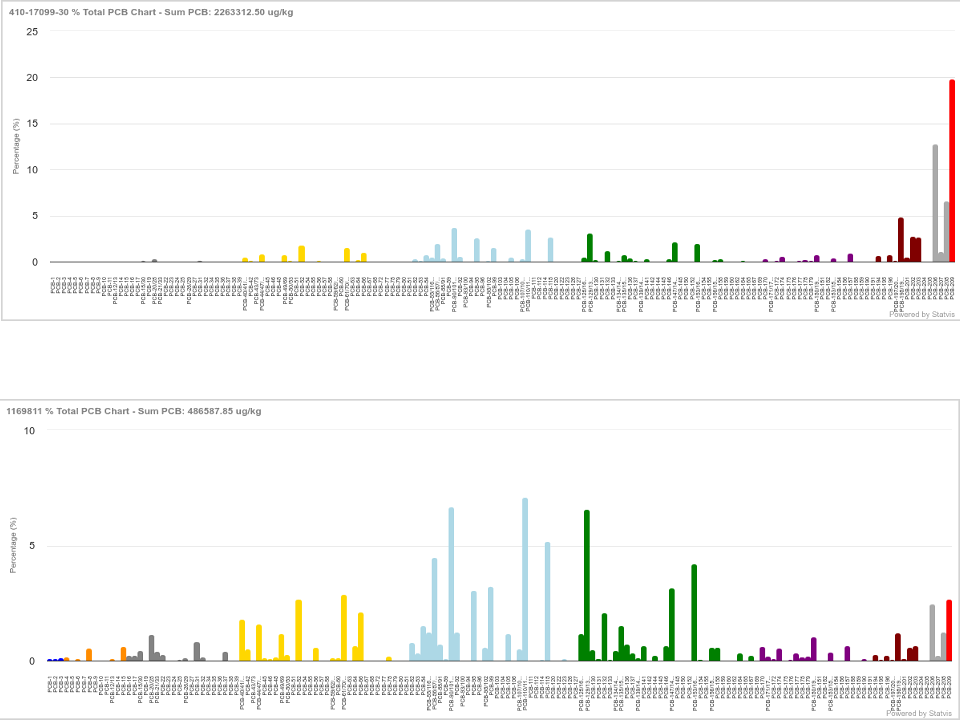Why you need to standardize your PCB data analytics
Can your spreadsheet do this? Every PCB graph available with a click so you can change what you are looking at to match what you are learning as you explore and interact with your data using the three superpowers Statvis gives you:
Instant data access.
Bring all your historical data for a project together in one place, while maintaining separate records for each dataset you have added over time.
Filter interactively by any sample grouping of interest:
date
depth
project area (spill area, background),
laboratory that did the analytical
status (excavated, damage well etc.)
anything else that is important to you…
Standardized workflows.
Every graph formatted the same automatically for clear comparisons.
Switch between % total and % homologues with a toggle (or show both).
Easily calculate Aroclors from congener results.
Compare to commercial Aroclor mixtures using Frame, Rushneck, or Pacific Rim co-elutions.
Easy explanation of complex science.
Pick visualizations that show the patterns and trends the best.
Display individual congeners, calculated Aroclors, or both!
Export Statvis sample report cards with all the critical information for a sample.
Compare samples to each other, your most source-like samples.
Show calculated amounts of commercial Aroclor mixtures present.
Display in an interactive portal with data, graphs, map, annotations, shapefile layers are all interactive.
The choice is clear (just like your data in Statvis).
Statvis makes all these activities effortlessly interactive.
Spreadsheets make a few of these things possible slowly and painfully, as flat contextless charts.

